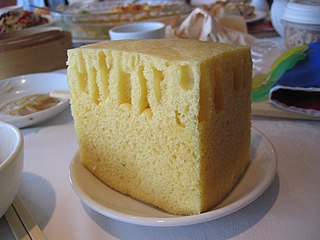
The pound or pound-mass is a unit of mass used in both the British imperial and United States customary systems of measurement. Various definitions have been used; the most common today is the international avoirdupois pound, which is legally defined as exactly 0.45359237 kilograms, and which is divided into 16 avoirdupois ounces. The international standard symbol for the avoirdupois pound is lb; an alternative symbol is lbm, #, and ℔ or ″̶.

Tael, also known as the tahil and by other names, can refer to any one of several weight measures used in East Asia and Southeast Asia. It usually refers to the Chinese tael, a part of the Chinese system of weights and currency. The Chinese tael was standardized to 50 grams in 1959.

Chinese units of measurement, known in Chinese as the shìzhì, are the traditional units of measurement of the Han Chinese. Although Chinese numerals have been decimal (base-10) since the Shang, several Chinese measures use hexadecimal (base-16). Local applications have varied, but the Chinese dynasties usually proclaimed standard measurements and recorded their predecessor's systems in their histories.

A shophouse is a building type serving both as a residence and a commercial business. It is defined in dictionary as a building type found in Southeast Asia that is "a shop opening on to the pavement and also used as the owner's residence", and became a commonly used term since the 1950s. Variations of the shophouse may also be found in other parts of the world; in Southern China, Hong Kong, and Macau, it is found in a building type known as Tong lau, and in towns and cities in Sri Lanka. They stand in a terraced house configuration, often fronted with arcades or colonnades, which present a unique townscape in Southeast Asia, Sri Lanka, and South China.

The chi is a traditional Chinese unit of length. Although it is often translated as the "Chinese foot", its length was originally derived from the distance measured by a human hand, from the tip of the thumb to the tip of the forefinger, and is similar to the ancient span. It first appeared during China's Shang dynasty approximately 3,000 years ago and has since been adopted by other East Asian cultures such as Japan (shaku), Korea (ja/cheok), and Vietnam (thước). Its present value is standardized at around one-third metre, although the exact standards vary among the mainland of the People's Republic of China, its special administrative region of Hong Kong, and Taiwan.

UTC+08:00 is an identifier for a time offset from UTC of +08:00.

Cài is a Chinese-language surname that derives from the name of the ancient Cai state. In 2019 it was the 38th most common surname in China, but the 9th most common in Taiwan, where it is usually romanized as "Tsai", "Tsay", or "Chai" and the 8th most common in Singapore, where it is usually romanized as "Chua", which is based on its Teochew and Hokkien pronunciation. Koreans use Chinese-derived family names and in Korean, Cai is 채 in Hangul, "Chae" in Revised Romanization, It is also a common name in Hong Kong where it is romanized as "Choy", "Choi" or "Tsoi". In Macau, it is spelled as "Choi". In Malaysia, it is romanized as "Choi" from the Cantonese pronunciation, and "Chua" or "Chuah" from the Hokkien or Teochew pronunciation. It is romanized in the Philippines as "Chua" or "Chuah", and in Thailand as "Chuo" (ฉั่ว). Moreover, it is also romanized in Cambodia as either "Chhay" or "Chhor" among people of full Chinese descent living in Cambodia and as “Tjhai”, "Tjoa" or "Chua" in Indonesia.
Traditional Japanese units of measurement or the shakkanhō is the traditional system of measurement used by the people of the Japanese archipelago. It is largely based on the Chinese system, which spread to Japan and the rest of the Sinosphere in antiquity. It has remained mostly unaltered since the adoption of the measures of the Tang dynasty in 701. Following the 1868 Meiji Restoration, Imperial Japan adopted the metric system and defined the traditional units in metric terms on the basis of a prototype metre and kilogram. The present values of most Korean and Taiwanese units of measurement derive from these values as well.

A picul or tam is a traditional Asian unit of weight, defined as "as much as a man can carry on a shoulder-pole".
Taiwanese units of measurement are the customary and traditional units of measure used in Taiwan. The Taiwanese units formed in the 1900s when Taiwan was under Japanese rule. The system mainly refers to Japanese system. The measurement refers to the traditional size of a Japanese flooring mat called a Tatami mat which were positioned to completely cover the floor of traditional Japanese homes, therefore it became a convenient measurement tool as mat area was standardised hundreds of years ago. In Taiwan the measurement units are pronounced in Taiwanese Hokkien and Hakka before the World War II and adopted by the Mandarin speaking immigrants from China in 1949. Today, the Taiwanese units are used exclusively, in some cases alongside official SI units, and in other cases they have been replaced by SI.
A candareen is a traditional measurement of weight in East Asia. It is equal to 10 cash and is 1⁄10 of a mace. It is approximately 378 milligrams. A troy candareen is approximately 374 milligrams (5.77 gr).
A mace is a traditional Chinese measurement of weight in East Asia that was also used as a currency denomination. It is equal to 10 candareens and is 1⁄10 of a tael or approximately 3.78 grams. A troy mace is approximately 3.7429 grams. In Hong Kong, one mace is 3.779936375 grams. and in Ordinance 22 of 1884, it is 2⁄15 ounces avoirdupois. In Singapore, one mace is 3.77994 grams.
Units of measurement used in Malaysia and neighbouring countries include the kati, a unit of mass, and the gantang, a unit of volume.
Cash or li is a traditional Chinese unit of weight.
This article details the fixtures and results of the Taiwan national football team. They played their first match in 1954.

Hong Kong has three main systems of units of measurement in current use:
Vietnamese units of measurement are the largely decimal units of measurement traditionally used in Vietnam until metrication. The base unit of length is the thước or xích. Some of the traditional unit names have been repurposed for metric units, such as thước for the metre, while other traditional names remain in translations of imperial units, such as dặm Anh for the English mile.

This is a list of the Hong Kong national football team results from 2010 to 2019.

Malay sponge cake, written as either or and known as ma lai go in Cantonese and ma lai gao in Mandarin, is a popular dessert cake in Guangdong and in Hong Kong. It usually can be seen at a traditional teahouse in Guangdong and Hong Kong. The Malay sponge cake is made up of lard or butter, flour, and eggs, by using bamboo steamer to give puffiness. An entire Malay sponge cake is a huge yellow round cake, but is generally sold as slices in teahouses. There are many ways to make a Malay sponge cake, but in general, the taste should be very soft, sweet and chewy.













